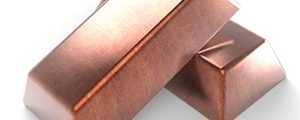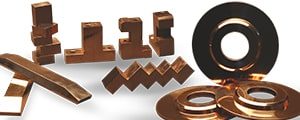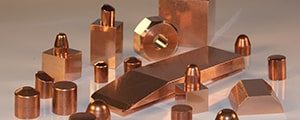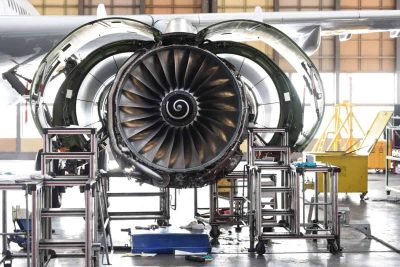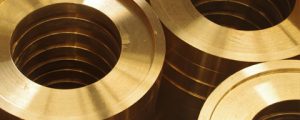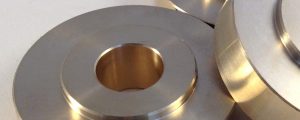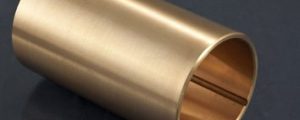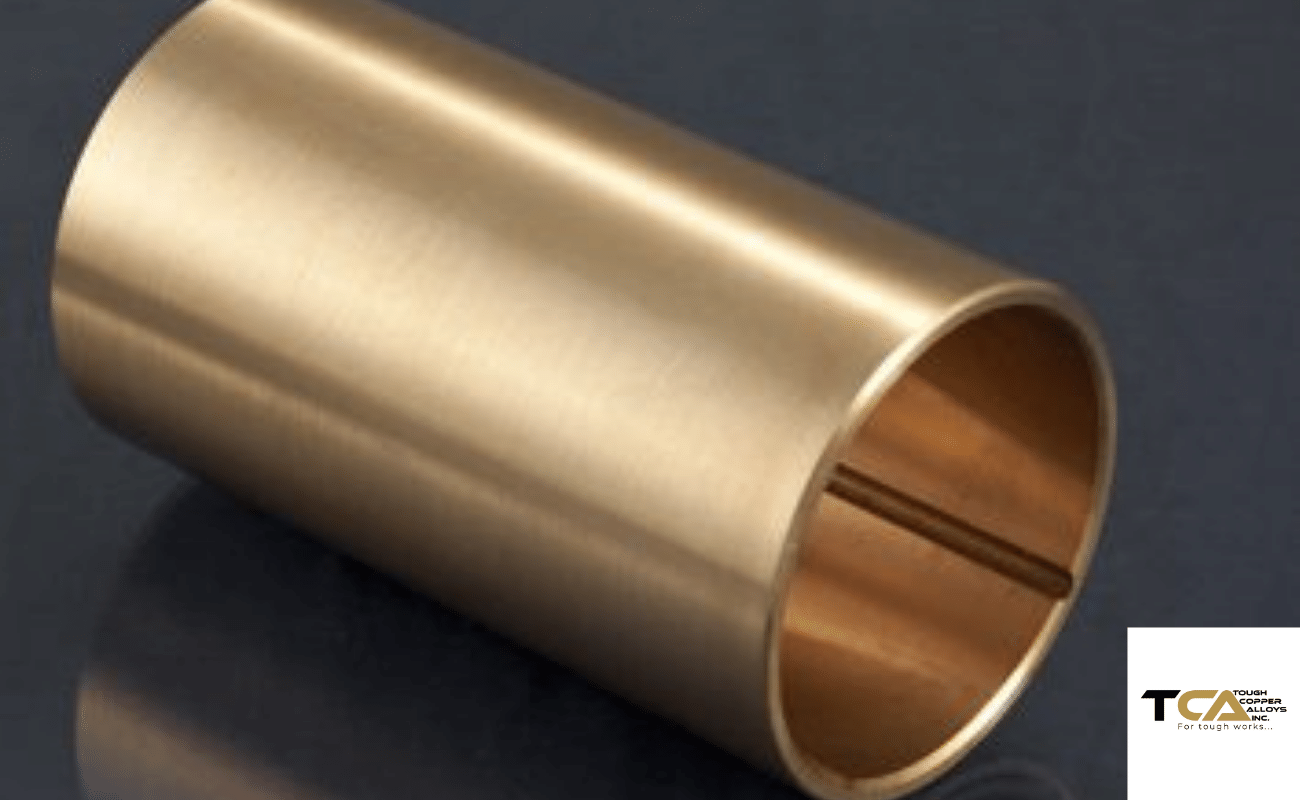What is “C97300” Material?
C97300 is a copper-tin-zinc alloy that is also known as High-Leaded Tin Bronze or Nickel Bearing Tin Bronze. This material is well-regarded for its high strength, excellent wear resistance, and exceptional machinability. It is also highly resistant to corrosion, making it an ideal choice for a variety of industrial applications.
C97300 is composed of approximately 82% copper, 10% tin, 5% zinc, and 3% lead. The addition of lead enhances the alloy’s machinability, making it easy to work with during the manufacturing process. The nickel content in C97300 also contributes to its excellent wear resistance.
One of the main advantages of C97300 is its high strength. It has a tensile strength of 80 ksi and a yield strength of 35 ksi, which means it can withstand high levels of stress without permanent deformation. C97300 also has a high hardness, measuring 140 on the Brinell hardness scale, which indicates its ability to resist wear and abrasion.
In addition to its mechanical properties, C97300 is also highly resistant to corrosion. It can withstand exposure to seawater, acids, and other corrosive substances, making it an ideal choice for marine and offshore applications. It is also resistant to dezincification, a type of corrosion that can occur in brass alloys.
C97300’s exceptional machinability is another advantage of this material. It can be easily machined into complex shapes, making it a popular choice for applications that require precise and intricate parts. Its machinability also reduces manufacturing costs by decreasing the time required for production.
C97300 is used in a variety of industrial applications, including marine hardware, pumps, valves, and gears. Its high strength, wear resistance, and corrosion resistance make it a reliable and durable choice for harsh environments.
In summary, C97300 is a copper-tin-zinc alloy that exhibits exceptional mechanical properties, including high strength and wear resistance, as well as excellent machinability and corrosion resistance. Its composition and properties make it an ideal choice for a wide range of industrial applications, and its popularity is a testament to its reliability and durability.
Application Areas & Industries
C97300 is a copper-tin-lead alloy that exhibits exceptional strength, durability, and wear resistance, making it ideal for various industrial applications. In this guide, we will explore some of the most common application areas and industries where C97300 is used:
Manufacturing Industry: C97300’s excellent mechanical properties make it an ideal choice for industries that require strong and durable materials that can withstand harsh environments. The alloy is commonly used in the manufacturing of bushings, bearings, gears, worm wheels, and other components that require high strength and wear resistance.
Marine Industry: C97300’s excellent corrosion resistance makes it an ideal material for use in marine hardware, such as propeller shafts, seawater pumps, valve bodies, heat exchangers, and condenser tubes. Its resistance to seawater corrosion is particularly useful for marine applications.
Aerospace Industry: C97300 is commonly used in the aerospace industry for its high strength, wear resistance, and excellent machinability. It is often used in aircraft landing gear, hydraulic cylinder parts, and other components that require high strength and durability.
Automotive Industry: The alloy’s high strength and wear resistance make it an ideal material for use in various automotive components, such as gears, bearings, and valve guides. Its excellent machinability and corrosion resistance also make it a popular choice for manufacturing engine parts.
Construction Industry: C97300 is sometimes used in construction projects where its high strength and corrosion resistance are beneficial. For example, it may be used in building hardware, such as hinges and fasteners, or in decorative applications where its unique appearance adds aesthetic value.
In summary, C97300 is a copper-tin-lead alloy that exhibits excellent mechanical properties, making it an ideal material for various industrial applications. Its high strength, wear resistance, and corrosion resistance make it an ideal choice for industries such as manufacturing, marine, aerospace, automotive, and construction. Engineers and manufacturers can rely on C97300 for its reliability, durability, and excellent performance in harsh environments. If you are considering using C97300 material for your next project, consult with a knowledgeable supplier to ensure you are getting the right material for your specific application.
Common Fabrication Processes
C97300, a copper-tin-lead alloy, is a popular material for industrial applications due to its exceptional mechanical properties. In this guide, we will explore some of the common fabrication processes used to manufacture components from C97300.
Casting: Casting is a widely used process in which molten C97300 is poured into a mold to create complex shapes and large parts such as gears and bushings. The process is also commonly used to manufacture marine hardware and other components that require high strength and corrosion resistance.
Forging: Forging involves heating C97300 to a high temperature and using a hammer or press to shape it into the desired form. This process creates high-strength and durable components such as aircraft landing gear and hydraulic cylinder parts, and it can improve the material’s hardness and toughness.
Extrusion: Extrusion is a process that involves forcing C97300 through a die to create continuous profiles with specific shapes and sizes. Extruded C97300 products are popular in the manufacturing of automotive components such as valve guides and bearings.
Rolling: Rolling involves passing C97300 between rollers to reduce its thickness and create sheets or strips. This process improves the material’s mechanical properties, such as its hardness, strength, and ductility, and it is commonly used in the manufacturing of electrical components such as switchgear and circuit breakers.
Machining: Machining involves using cutting tools to shape and remove material from the workpiece. It can produce complex shapes and tight tolerances, making it ideal for creating customized C97300 components. Machining is commonly used in the manufacturing of aerospace components such as aircraft engine parts.
In conclusion, C97300 is a versatile copper-tin-lead alloy that can be fabricated using several common processes, including casting, forging, extrusion, rolling, and machining. Each process can produce different shapes, sizes, and properties of C97300, making it suitable for various industrial applications. Understanding these processes is essential for engineers and manufacturers who want to determine the most suitable method for their specific application.
Chemical Composition
C97300 is a copper-tin-lead alloy with exceptional mechanical properties that make it a popular material for various industrial applications. Its chemical composition plays a crucial role in determining its properties, such as its strength, hardness, and corrosion resistance. In this article, we will explore the chemical composition of C97300 and its impact on the material’s performance.
Chemical Composition of C97300:
The following table shows the chemical composition of C97300:
| Element | Content (% by weight) |
|---|---|
| Copper | 84.0 – 86.0 |
| Tin | 8.0 – 10.0 |
| Lead | 4.0 – 6.0 |
| Zinc | 1.5 – 3.0 |
| Iron | 0.15 max |
| Nickel | 0.50 max |
| Phosphorus | 0.15 max |
| Sulphur | 0.08 max |
As seen from the table, C97300 is primarily composed of copper, followed by tin and lead. Copper is the primary component, accounting for 84.0 to 86.0 percent of the alloy’s weight. Tin and lead make up 8.0 to 10.0 percent and 4.0 to 6.0 percent, respectively. Zinc, iron, nickel, phosphorus, and sulphur are also present in smaller amounts.
The presence of these elements affects the properties of C97300. Copper provides the alloy with high electrical and thermal conductivity, while tin improves its strength and hardness. Lead enhances its machinability and improves its resistance to corrosion in seawater. Zinc and nickel help to improve its strength and ductility, while phosphorus and sulphur are impurities that can affect its properties adversely.
Conclusion:
In summary, the chemical composition of C97300 plays a vital role in determining its mechanical properties, such as strength, hardness, and corrosion resistance. Copper, tin, and lead are the primary components, while other elements such as zinc, iron, nickel, phosphorus, and sulphur are present in smaller amounts. Understanding the chemical composition of C97300 is crucial for engineers and manufacturers who want to use the material in their applications. By selecting the right chemical composition, they can ensure that the C97300 component performs well in their specific application.
Physical Properties
C97300 is a copper-tin-lead alloy that possesses remarkable physical properties, making it an ideal material for various industrial applications. Its physical properties are a combination of the properties of its constituent elements, copper, tin, and lead. Understanding the physical properties of C97300 is crucial for engineers and manufacturers who want to determine the most suitable application for the material.
Density: The density of C97300 is 8.89 g/cm³, which is relatively high compared to other copper alloys. The high density of C97300 makes it suitable for applications where weight is a concern, such as in marine hardware and other components that require high strength and corrosion resistance.
Melting Point: C97300 has a relatively low melting point of approximately 625°C (1157°F). This low melting point makes it an ideal material for applications that require high-temperature processes, such as casting and forging.
Thermal Conductivity: C97300 has a thermal conductivity of approximately 66 W/mK, which is relatively high compared to other copper alloys. This high thermal conductivity makes it suitable for applications where heat transfer is important, such as in heat exchangers and electrical components.
Electrical Conductivity: C97300 has an electrical conductivity of approximately 12% IACS (International Annealed Copper Standard), which is relatively low compared to other copper alloys. However, it is still considered a good conductor of electricity, making it suitable for electrical components.
Corrosion Resistance: C97300 has excellent corrosion resistance properties, making it suitable for applications in harsh environments, such as marine hardware and other components that are exposed to saltwater or acidic conditions. The alloy’s corrosion resistance properties are a result of the addition of tin and lead to the copper base.
Magnetic Properties: C97300 is not a magnetic material, which makes it suitable for applications where magnetic interference needs to be avoided, such as in electronic components.
In summary, C97300 possesses remarkable physical properties, including high density, low melting point, high thermal conductivity, good electrical conductivity, excellent corrosion resistance, and non-magnetic properties. These properties make it an ideal material for various industrial applications, such as marine hardware, heat exchangers, and electrical components. Understanding the physical properties of C97300 is crucial for engineers and manufacturers who want to determine the most suitable application for the material.
Fabrication Properties
C97300 is a copper-tin-lead alloy that exhibits excellent mechanical properties, making it a popular material for various industrial applications. Its fabrication properties are also noteworthy, as they allow engineers and manufacturers to produce components with high precision and consistency. Understanding the fabrication properties of C97300 is essential for those who want to determine the most suitable method for their specific application. Here are some of the key fabrication properties of C97300:
Machinability: C97300 exhibits excellent machinability, making it easy to cut, drill, and shape the material using various tools and machines. Machining can produce complex shapes and tight tolerances, making it ideal for creating customized C97300 components. It is commonly used in the manufacturing of aerospace components, such as aircraft engine parts, and automotive components, such as valve guides and bearings.
Forgeability: C97300 also exhibits excellent forgeability, which refers to its ability to deform under compression without cracking or breaking. This property makes it suitable for forging processes, which involve shaping the material using a hammer or a press. Forging is an excellent method for creating high-strength and durable components, such as aircraft landing gear and hydraulic cylinder parts.
Solderability and Brazability: Another noteworthy fabrication property of C97300 is its excellent solderability and brazability. This property makes it easy to join two or more pieces of C97300 material together using solder or brazing methods. Soldering involves melting a filler metal and using it to join the two pieces of material together. Brazing involves heating the material to a high temperature and then joining the pieces using a filler metal that has a lower melting point than the base metal. These processes are often used to create components that require a strong and permanent bond.
Corrosion Resistance: C97300 also exhibits excellent corrosion resistance, making it ideal for use in harsh environments. Its corrosion resistance is due to the presence of tin and lead in its chemical composition, which forms a protective layer on the material’s surface. This property makes it suitable for marine hardware and other components that require high strength and corrosion resistance.
In summary, the fabrication properties of C97300 make it an ideal choice for various industrial applications. Its excellent properties, including machinability, forgeability, solderability, brazability, and corrosion resistance, make it a popular material for creating high-strength and durable components. If you are considering using C97300 for your next project, consult with a knowledgeable supplier to ensure that you are getting the right material for your specific application.
Applicable Specifications
C97300 is a copper-tin-lead alloy that is widely used in various industrial applications due to its excellent mechanical and fabrication properties. When selecting C97300 for a specific application, it is essential to ensure that the material meets the required specifications and standards. Here are some of the applicable specifications of C97300:
ASTM B271: This specification covers the standard requirements for copper alloy sand castings for general applications. C97300 falls under the copper-tin-lead category and meets the required chemical composition, mechanical properties, and testing requirements.
ASTM B505/B505M: This specification covers the standard requirements for copper alloy continuous castings. C97300 falls under the copper-tin-lead category and meets the required chemical composition, mechanical properties, and testing requirements.
AMS 4880: This specification covers the requirements for a copper-tin-lead alloy that is primarily used in the manufacturing of bushings, bearings, and wear plates. C97300 meets the required chemical composition, mechanical properties, and testing requirements specified in the AMS 4880 standard.
MIL-C-11866: This military specification covers the requirements for copper-base alloy sand castings used in general-purpose applications. C97300 falls under the copper-tin-lead category and meets the required chemical composition, mechanical properties, and testing requirements.
Overall, understanding the applicable specifications of C97300 is crucial for ensuring that the material meets the required standards for a specific application. Consult with a knowledgeable supplier to ensure that you are getting the right material for your project, and it meets all necessary specifications and standards.
Thermal Properties
C97300, a copper-nickel-silicon alloy, is widely used in industrial applications due to its outstanding thermal properties. Understanding the thermal characteristics of C97300 is essential for ensuring its suitability for applications where efficient heat transfer and high-temperature resistance are critical. Here are the key thermal properties of C97300:
Thermal conductivity: C97300 exhibits high thermal conductivity, making it a preferred choice for applications where heat dissipation is critical, such as in cooling systems and heat exchangers.
Thermal expansion coefficient: With low thermal expansion coefficient, C97300 can withstand thermal stresses without cracking or deforming, making it ideal for high-temperature environments.
Melting point: C97300 has a high melting point of around 2140°F (1171°C), making it suitable for high-temperature applications.
Thermal fatigue resistance: C97300 is highly resistant to thermal fatigue, enabling it to maintain its structural integrity even after repeated exposure to high temperatures and thermal cycling, making it a preferred choice for engine components and exhaust systems.
Overall, C97300 offers exceptional thermal properties, including high thermal conductivity, low thermal expansion coefficient, high melting point, and excellent thermal fatigue resistance. These properties make it an ideal material for various industrial applications, where efficient heat transfer and structural integrity are critical. By understanding the thermal properties of C97300, you can ensure its suitability for your specific application, enabling optimal performance and long-term durability.
Typical Uses
C97300 is a copper-nickel-silicon alloy that is widely used in various industrial applications due to its excellent thermal and mechanical properties. This alloy is highly preferred for applications where efficient heat transfer and structural integrity are critical factors. Here are some of the typical uses of C97300 in industrial applications:
Heat exchangers: C97300’s high thermal conductivity makes it an ideal choice for heat exchangers, as it enables efficient heat transfer between two fluids without compromising their quality.
Cooling systems: Due to its excellent heat dissipation capabilities, C97300 is also commonly used in cooling systems such as radiators, air conditioners, and heat sinks.
Marine industry: C97300’s resistance to seawater corrosion makes it an ideal material for marine applications such as propeller shafts, seawater piping, and heat exchangers.
Automotive industry: C97300 is widely used in the automotive industry for engine components, exhaust systems, and heat exchangers due to its excellent thermal fatigue resistance and high-temperature stability.
Aerospace industry: C97300’s high strength and resistance to thermal fatigue make it a preferred choice for aerospace applications such as heat exchangers, turbine blades, and jet engine components.
Overall, C97300 is a versatile alloy that finds widespread use in various industrial applications, particularly where high-temperature resistance, efficient heat transfer, and structural integrity are critical factors. By choosing C97300 for your application, you can be confident of its reliability and long-term performance.
Equivalents
C97300 is a copper-nickel-silicon alloy that offers excellent thermal and mechanical properties, making it a popular choice for various industrial applications. However, in some cases, you may need to find an alternative material that can provide similar properties to C97300. Here are some of the equivalents of C97300 that you may consider for your application:
C95500: This is a copper-nickel-aluminum alloy that is similar to C97300 in terms of its high strength and excellent resistance to corrosion and erosion. C95500 is commonly used in marine applications and is well-suited for environments where seawater corrosion is a concern.
C95800: Also known as “Aluminum Bronze,” this copper-aluminum alloy is a popular alternative to C97300 due to its high strength, excellent corrosion resistance, and good thermal conductivity. It is commonly used in marine applications, valve components, and other high-stress applications.
C93200: This is a cast bronze alloy that contains a high percentage of copper, as well as tin and zinc. It is well-known for its excellent wear resistance and is commonly used in bearings, bushings, and other applications where high strength and durability are essential.
C83600: This is a leaded red brass alloy that contains copper, zinc, and lead. It is known for its excellent machinability and is commonly used in valve components, fittings, and other applications where tight tolerances are required.
In summary, while C97300 is a highly desirable alloy for various industrial applications, there are several equivalents available that offer similar properties. By considering these alternatives, you can ensure that you find the best material for your specific application, taking into account factors such as cost, availability, and specific performance requirements.
Mechanical Properties
C97300 is a copper-nickel-silicon alloy that is well-known for its excellent mechanical properties, making it a popular choice for various industrial applications. Here are some of the key mechanical properties of C97300:
Tensile strength: The tensile strength of C97300 is typically in the range of 80,000-95,000 psi, which means it can withstand significant stress without breaking or deforming.
Yield strength: The yield strength of C97300 is typically in the range of 35,000-50,000 psi, which means it can withstand a certain amount of stress without undergoing permanent deformation.
Elongation: The elongation of C97300 is typically in the range of 10-15%, which means it can undergo a certain amount of deformation before breaking.
Hardness: The hardness of C97300 is typically in the range of 80-95 HRB, which means it is a relatively soft material that can be easily machined and formed.
Fatigue strength: The fatigue strength of C97300 is excellent, which means it can withstand repeated stress cycles without undergoing fatigue failure.
To better understand the mechanical properties of C97300, refer to the table below:
| Property | Value |
|---|---|
| Tensile strength | 80,000-95,000 psi |
| Yield strength | 35,000-50,000 psi |
| Elongation | 10-15% |
| Hardness | 80-95 HRB |
| Fatigue strength | Excellent |
Overall, the mechanical properties of C97300 make it a highly desirable material for various industrial applications. Its excellent tensile and yield strength, combined with good elongation and fatigue strength, make it well-suited for high-stress applications such as valve components, engine parts, and other components subjected to significant stress and wear. By choosing C97300 for your application, you can be confident that you are using a reliable and durable material that can withstand significant mechanical stress over the long term.

